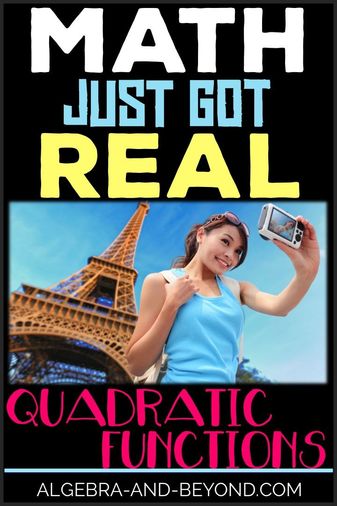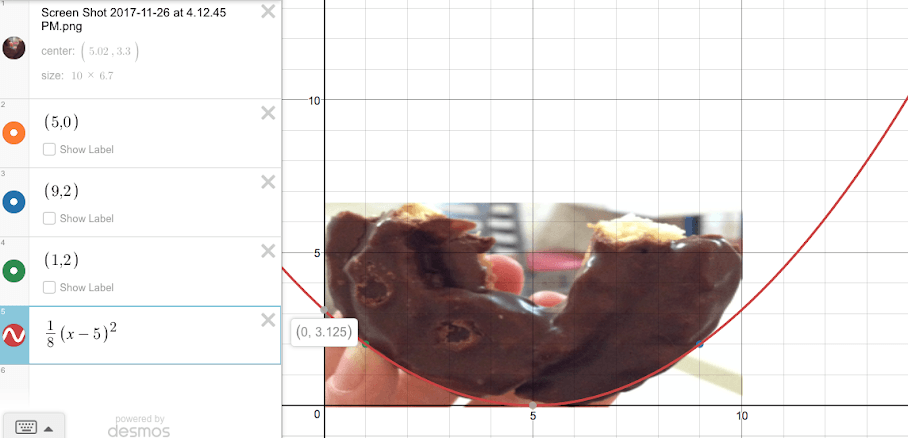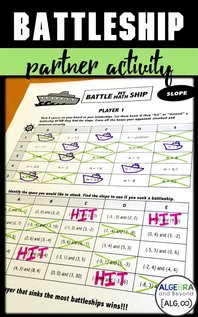 
If you were to visit my classroom, you would see a lot of different ways students learn: guided notes, games, stations, activities, projects and more! Project Based Learning (PBL) is a great way for students to critically think, problem solve, and, in general, see math differently. Therefore, I try to integrate a project into every unit and make them as “real” as possible.
One of my favorites, and my students, is the Parabola Selfie Project. In this project, students take math outside of the classroom and explore the real world to find a parabola. Let’s take a quick look at how this project is broken down… THE SELFIE
Students find a parabola in the real world and then take a selfie with it. Why take a selfie, you say? Well, first of all, it makes it fun for them since selfies are something they do often and share on Facebook, Snapchat, Instagram, or some other form of social media. Second, I want to make sure they don’t just Google search a picture online. That would take all of the fun out of this project. There is so much in the world to investigate, so I want them to go out there and see math as much as possible.
THE GRAPH
Next we pop that picture right into Desmos, which is an online graphing calculator. Students adjust the scale of the graph to match the dimensions of the real life parabola. I’ve even created a video showing students how to do this, in case they are not familiar with Desmos. Then they write an equation for their parabola and analyze the parabola by finding characteristics such as the axis of symmetry, vertex, domain, range, etc.
PEER REVIEW
In almost every project I try to create a fun little twist that involves students observing or reviewing each other’s project. In this one, I have students exchange their graphs with each other and use the Parabola Swap table to record their information. This will give students an opportunity to identify characteristics of another parabola and also receive feedback on the accuracy of their data.
THE PRESENTATION
I rarely have students complete a project and then individually present to the class. It takes up too much class time and sometimes it can be difficult to see and understand the data when in a slideshow. I’d rather students take their information and put it on a poster or in a report format. Then we do some kind of walk around to view all the projects up close.
For this project, since students already swapped parabola graphs with another group and filled out the characteristics table for that graph, I don’t have them fill out another form when they do the walk around. Instead, I have them view each project and then vote on who found the most unique parabola in the real world. I give out a prize to the first and second place winners. You could give out a homework pass, food, or anything that your students enjoy. This gives each student a little more incentive to really find a fun and unique parabola. GRADING
As with any project, I do use a rubric. I evaluate each project on the following criteria: neatness/organization, the parabola selfie, the graph, the characteristics of the graph, and the quadratic equation.
Here are some of my student’s Parabola Selfies:
Doesn’t the Parabola Selfie Project look like fun?!....and educational! Click on the project below that you'd like to try in your classroom:
Want to join the Algebra and Beyond mailing list to have instant access to fun and engaging resources?!
22 Comments
|
Hello there,
|















 RSS Feed
RSS Feed







